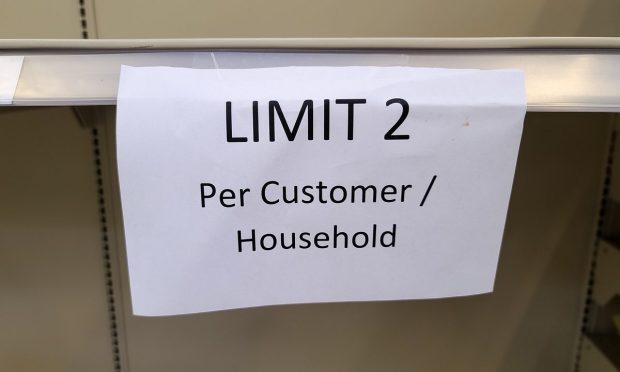Empty Shelves Test Grocery Store Customer Loyalty

Grocers are already seeing supply chain challenges impact their ability to meet demand this holiday season. Lakeland, Florida-based supermarket chain Publix, which operates 1,289 stores in Florida, Georgia, Alabama, Tennessee, South Carolina, North Carolina and Virginia, confirmed to Jacksonville, Florida’s First Coast News on Friday (Nov. 19) that it is limiting certain items to two per person during the season “due to ongoing supply issues and increased holiday demand.”
Some of these items are unsurprising — gravy, canned cranberry sauce and canned pie filling, for instance, are obvious choices, given their popularity on Americans’ Thanksgiving dinner tables. Paper goods such as disposable plates and napkins are also to be expected, especially given the overall paper goods shortage. Other items that are being limited, however, appear to have little to do with the holiday buying rush and more to do with longer-standing shortages — items such as sports drinks, pet food and juice pouches.
“There is not a set time determined for these limits, and the list can change to include more items or remove items,” a Publix spokesperson told the news outlet.
The lack of paper goods could take a toll on shopper loyalty. PYMNTS’ What Consumers Expect From Their Grocery Shopping Experiences, created in collaboration with ACI Worldwide, which featured a census-balanced survey of more than 2,300 U.S. adults, found nearly half of all millennials, 45% of Generation Z consumers and 43% of bridge millennials indicated that they shopped more at their favorite grocery stores over the past 18 months because of the availability of nonfood items.
You may also like: Digital Features Can Help Grocers Win Over 43 Percent Of Shoppers
Publix is far from the only major grocer expecting challenges staying stocked to meet consumers’ holiday needs.
“Supplies may look good now, but our shelves might not look the same — they will not look the same on Wednesday before Thanksgiving,” April Martin, corporate affairs manager for the Kroger Dallas Division, told NBC 5 Dallas-Fort Worth.
Some local business owners are noting a trend where consumer demand has actually increased over previous years. Typically, this would be a huge help for independent grocers, which have in recent years been struggling not only against industry giants but also against the broader shift in consumer food spending towards restaurants. However, given these shortages, grocers are unable to meet consumers’ needs, and the situation risks frustrating grocery shoppers and losing their loyalty.
“I think, genuinely, people are out spending money and that may also be contributing to the supply chain issue,” Anthony Capece Jr., executive director of the Central District Management Association in Albany, told the city’s WAMC Northeast Public Radio station. “That’s kind of a weird anomaly that people [want] to buy more, but the supply isn’t there to provide it.”
Consumers are noticing these challenges, and anxiety is building. FMI’s October survey of grocery shopping trends found 26% of U.S. consumers are concerned that stores may not be able to keep their go-to holiday foods in stock, including 45% of those in households with children. Additionally, the study found that, overall, 53% of U.S. consumers are worried about food price inflation.
